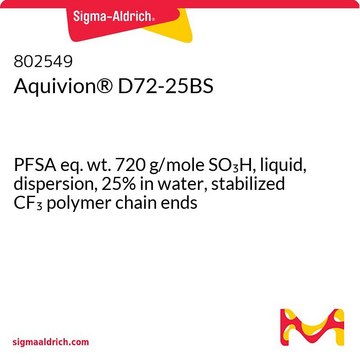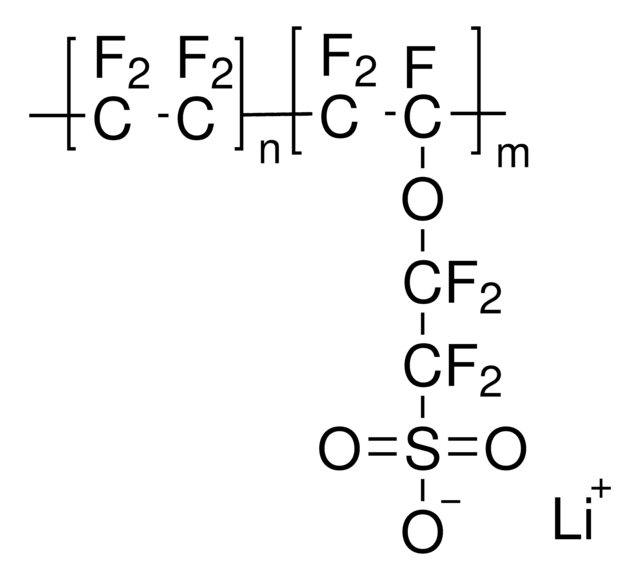802743
Aquivion® E98-09S
membrane sheet, contains CF3 polymer chain ends as stabilizer, PFSA eq. wt. 980 g/mole SO3H, L × W × thickness 31 cm × 31 cm × 90 μm
Synonym(s):
Aquivion® SO3H, Tetrafluoroethylene-perfluoro(3-oxa-4-pentenesulfonic acid) copolymer, Ethanesulfonic acid
About This Item
Recommended Products
form
membrane sheet
contains
CF3 polymer chain ends as stabilizer
L × W × thickness
31 cm × 31 cm × 90 μm
Looking for similar products? Visit Product Comparison Guide
General description
Application
Legal Information
Storage Class Code
11 - Combustible Solids
WGK
WGK 3
Flash Point(F)
Not applicable
Flash Point(C)
Not applicable
Choose from one of the most recent versions:
Already Own This Product?
Find documentation for the products that you have recently purchased in the Document Library.
Articles
Advances in the electrochemical conversion of water to and from hydrogen and oxygen have principally been achieved through the development of new materials and by understanding the mechanisms of the degradation of proton exchange membrane fuel cells (PEMFC) during operation.
Our team of scientists has experience in all areas of research including Life Science, Material Science, Chemical Synthesis, Chromatography, Analytical and many others.
Contact Technical Service





